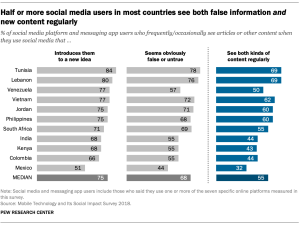
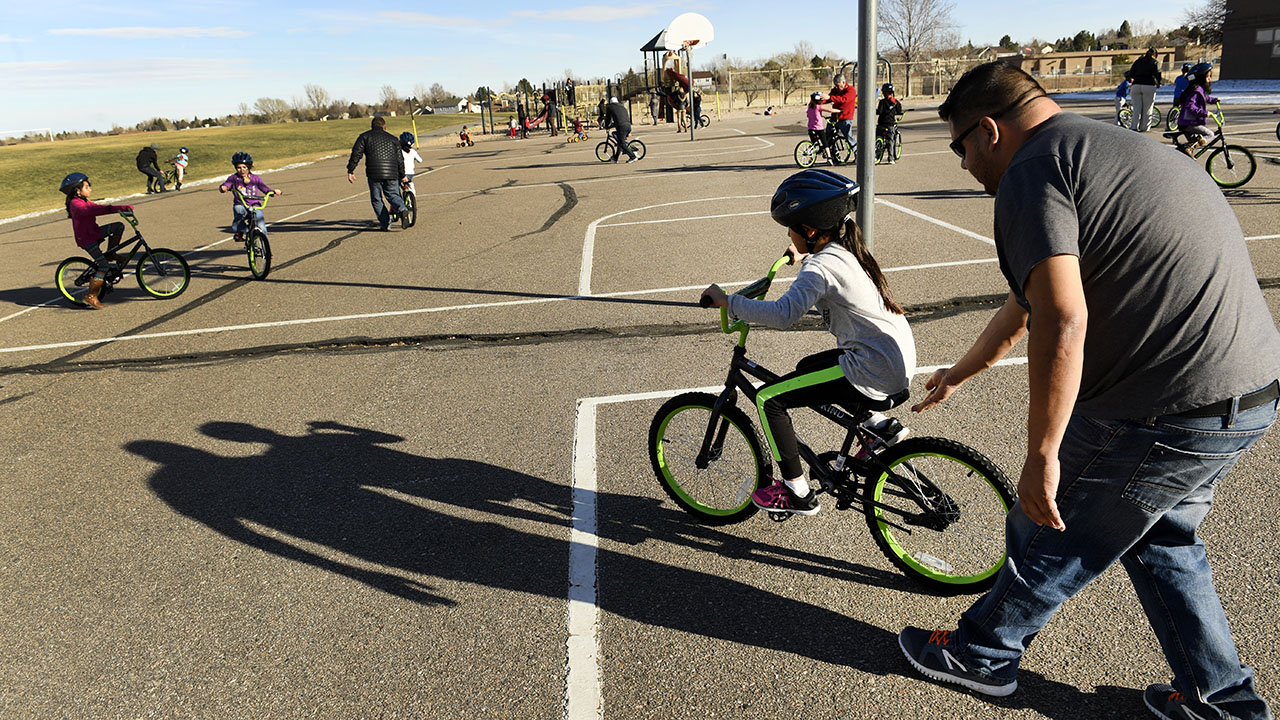
Fatherhood in America is changing. Today, fathers who live with their children are taking a more active role in caring for them and helping out around the house, and the ranks of single fathers have grown significantly in recent decades. At the same time, more and more children are growing up without a father in the home.
The changing role of fathers has introduced new challenges as dads juggle the competing demands of family and work. Here are some key findings about fathers from Pew Research Center.
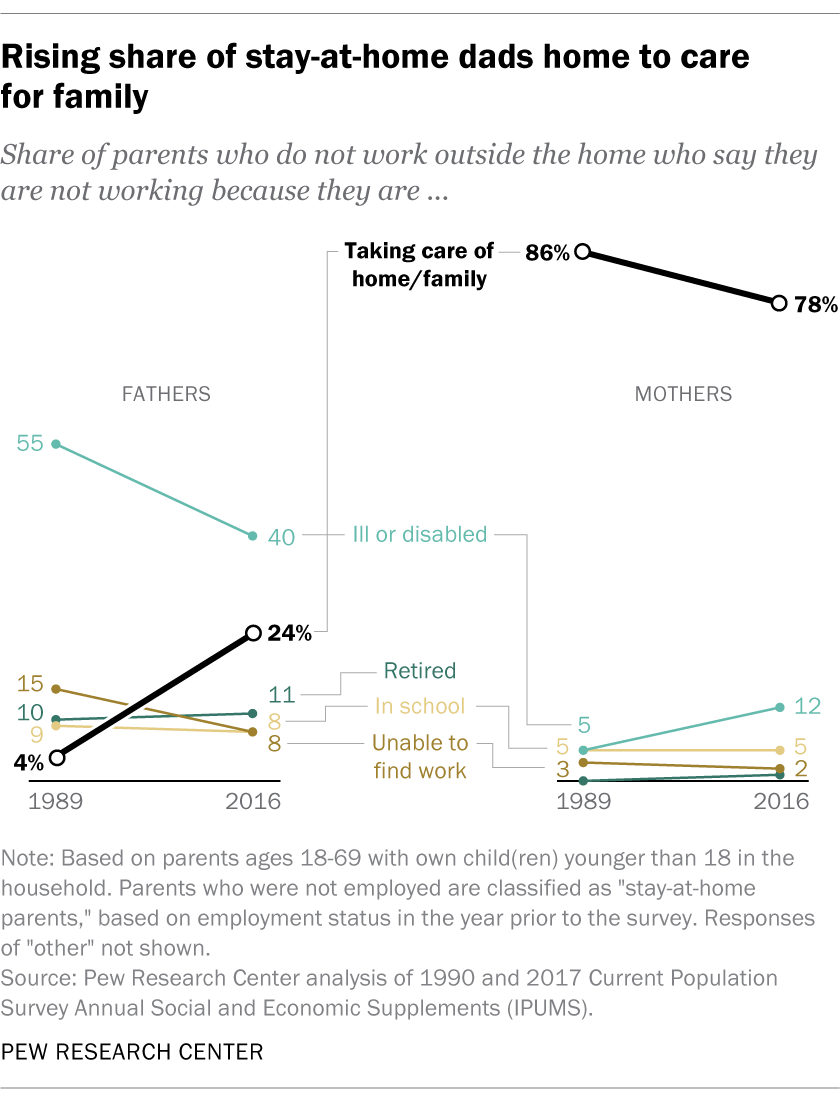
More dads are staying home to care for their kids. The share of fathers who are stay-at-home dads ticked up from 4% in 1989 to 7% in 2016. As a result, dads made up 17% of all stay-at-home parents in 2016, up from 10% in 1989. Among Millennials (those ages 20 to 35 in 2016), 6% of dads were at home with their kids. By comparison, 3% of Gen X dads were at home with their kids when they were the same age.
Among stay-at-home dads, it’s becoming much more common to be home specifically to care for family. In 2016, 24% of stay-at-home dads reported that this was the main reason they were at home, up from just 4% in 1989. In comparison, 78% of stay-at-home moms reported this was the main reason they were home, down from 86% in 1989.
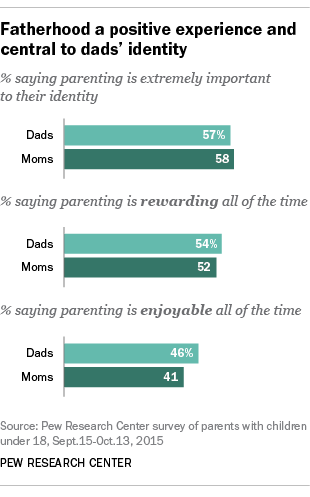
Dads see parenting as central to their identity. Dads are just as likely as moms to say that parenting is extremely important to their identity. Some 57% of fathers said this in a 2015 survey by the Center, compared with 58% of mothers. Like moms, many dads also seem to appreciate the benefits of parenthood: 54% reported that parenting is rewarding all of the time, as did 52% of moms. Meanwhile, 46% of fathers and 41% of mothers said they find parenting enjoyable all of the time.
A sizable minority of childless men (44% of those 18 to 49) hope to become fathers at some point, and another 35% are unsure if they want to become parents, according to a 2017 Pew Research Center survey. Among childless women in the same age group, 50% want to become mothers, while 22% are unsure if they want to.
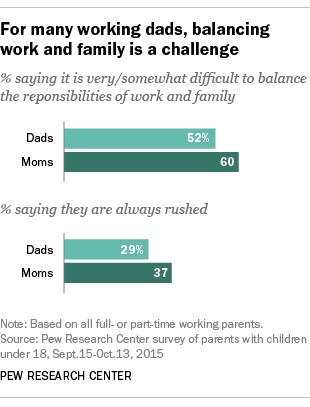
Work-family balance is a challenge for many working fathers. Just like mothers, many of today’s fathers find it challenging to balance work and family life. About half of working dads (52%) said in 2015 that it is very or somewhat difficult to do so, a slightly smaller share than the 60% of working mothers who said the same. And about three-in-ten working dads (29%) said they “always feel rushed,” as did 37% of working mothers.
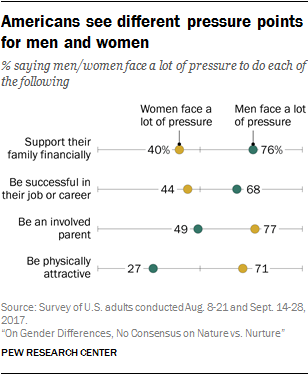
Most Americans think men face a lot of pressure to provide financially for their family. About three-fourths of adults (76%) said in a 2017 survey that men face a lot of pressure to support their family financially, while 49% said men face a lot of pressure to be an involved parent. In contrast, 77% said women face a lot of pressure to be an involved parent, and 40% said women face a lot of pressure to support their family financially.
In addition, the public thinks working fathers are under more pressure than working moms to return to their job after the birth or adoption of a child. A 2016 survey found that about half of adults (49%) said employers put more pressure on fathers to return to work quickly after the birth or adoption of a new child, while 18% said employers put more pressure on mothers. A third said employers pressure mothers and fathers about equally.
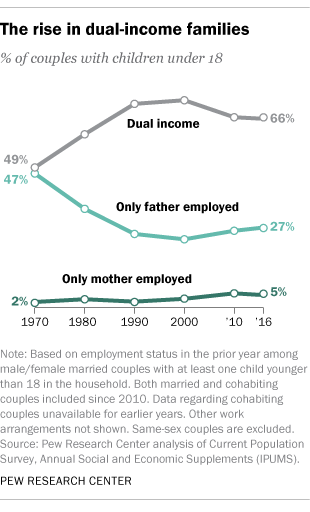
It’s become less common for dads to be their family’s sole breadwinner. As of 2016, about a quarter of couples (27%) who live with children younger than 18 were in families where only the father works. This marked a dramatic change from 1970, when almost half of these couples (47%) were in families where only the dad worked. The share of couples living in dual-earner families has risen significantly and now comprises the majority of two-parent families with children.
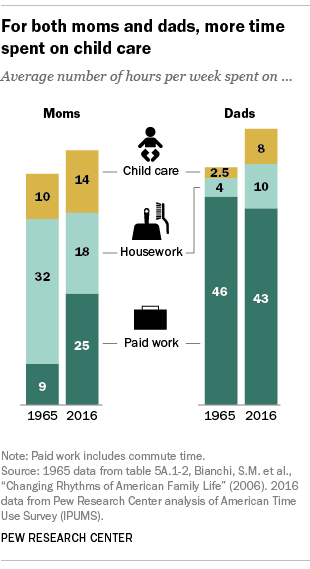
Dads are much more involved in child care than they were 50 years ago. In 2016, fathers reported spending an average of eight hours a week on child care – about triple the time they provided in 1965. And fathers put in about 10 hours a week on household chores in 2016, up from four hours in 1965. By comparison, mothers spent an average of about 14 hours a week on child care and 18 hours a week on housework in 2016.
When it comes to caregiving, moms and dads are still viewed differently. About half of Americans (53%) in 2016 said that, breast-feeding aside, mothers do a better job than fathers caring for a new baby. A somewhat smaller share (45%) said mothers and fathers do about equally well, and 1% of Americans said fathers do a better job than mothers.
While most (71%) said it’s equally important for new babies to bond with their mother and their father, about a quarter (27%) said it’s more important for new babies to bond with their moms, and 2% said it’s more important for new babies to bond with their fathers.
Some also see an advantage to moms – more than dads – caring for young children. Among the plurality of adults (44%) who said the ideal situation for a young child with two parents is for one parent to stay home, 39% said it’s better if that parent is the mother, while just 5% said a child is better off if the father stays home. More than half (56%) said it doesn’t matter which parent stays home.
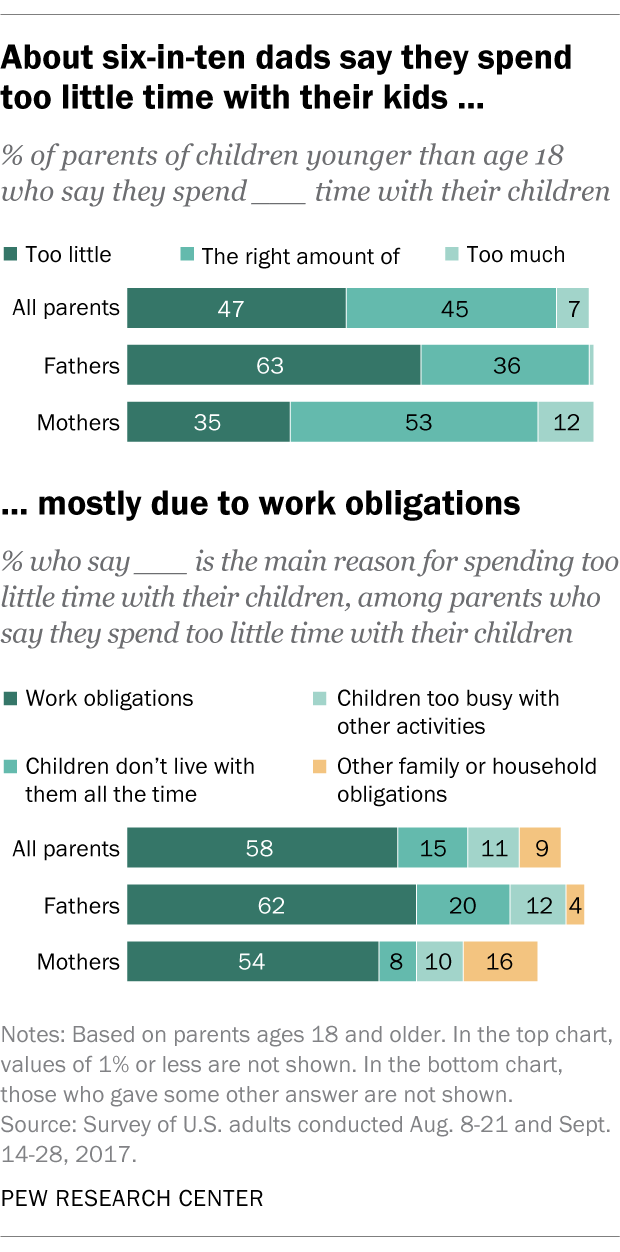
While they’re spending more time with their children, many dads feel they’re not doing enough. Most dads (63%) said in a 2017 survey that they spend too little time with their kids, compared with 35% of mothers who said the same. Among both dads and moms who said they spend too little time with their kids, work obligations were cited most often as the main reason.
Dads are also less positive about their own parenting abilities than are moms. Just 39% of fathers said in 2015 that they were doing a “very good job” raising their children, compared with 51% of mothers.
Note: This is an update of a post originally published on June 12, 2014.
